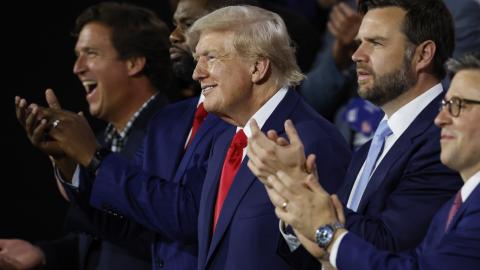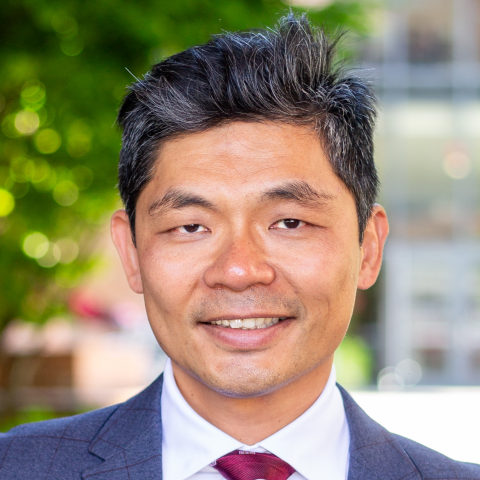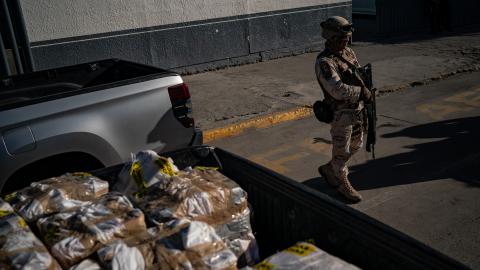With the death toll from overdoses now at more than 100,000 Americans each year, drug trafficking is the deadliest criminal activity in America today. Yet in response, the first objective of our current National Drug Control Strategy is: “The number of drug overdose deaths is reduced by 13 percent by 2025.” Translation: Meeting our primary goal entails accepting 250,000 or more American deaths from drug overdose by 2025.
It’s mind-boggling that anyone thinks that’s good enough — a clear indication of how badly we misunderstand our problem.
To do better, we must start with frank acknowledgement of the origins of our drug problem outside our borders. We need to meet this extreme danger with a strategy modeled on America’s defense against foreign terrorists — in this case, narco-terrorists.
In 2009, our national drug policy changed. The Obama administration reduced efforts to curtail the production and distribution of drugs at home and abroad. Our policy effectively gave up on supply, focusing instead on “harm reduction” — mitigating the adverse consequences of drug use.
Deaths since have skyrocketed. Cocaine and methamphetamine production and trafficking have increased. Most deadly of all, the synthetic opioid fentanyl has become an ever-greater part of the American drug supply.
Our ability to prevent major attacks on the U.S. homeland following the events of Sept. 11, 2001, has been remarkable, not least because we know that such attacks are a classic “needle in a haystack” problem — a small number of individuals with limited support able to inflict serious damage. By contrast, the threat from fentanyl and other illegal drugs presents a very big target — manufacturing, marketing, financing and logistics operations with many, many vulnerabilities. Let’s hit them.
Today, the Chinese Communist Party (CCP) is sending fentanyl and fentanyl precursors to Mexican cartels and hosting operations to launder their money. This vector of attack on us is deliberate. The evidence of CCP complicity is extensive — they are very guilty.
Their common response is to say that they are doing as much as they can; the threat comes from criminals and criminal activity that they are unable to reach. The claim is absurd. The CCP has created the most repressive surveillance state in history and can stop and neutralize any activity it deems criminal if it chooses to do so. This is a matter of ill will, not limited ability.
Our task is to change the behavior of the CCP, and that will require finding ways to cause harm to them sufficient to motivate them to change it. The measure of effectiveness is simple and clear: When overdose deaths decline rapidly — not merely by 13 percent over three years — our policies are working.
The CCP is the driver of the threat; Mexico is its center of gravity. The command-and-control network for poisoning Americans with fentanyl and other illegal drugs is distributed among several Mexican criminal organizations, the best known being the Sinaloa and Jalisco cartels.
U.S. officials should make clear that Mexico must destroy the narco-terrorist organizations now poisoning Americans. We can be Mexico’s partner, but a forthright statement of Mexico’s responsibility is the condition of genuine partnership. Mexico cannot remain a staging area and safe haven. We cannot stop the poisoning if Mexico doesn’t stop the poison.
The narco-terrorists of the cartels use violence and terror to take power and destroy democracy and rule of law. They are not merely a criminal threat, but a national security threat to Mexico and the U.S alike. The severity of this threat calls for the use of lethal force when necessary. We have the structures for the lawful authorization of the use of such force. We need to use these structures, and we should explain the necessity for such a policy change to the American public.
While we need enforcement across the entire supply network, action against lower-level operators — the most easily replaceable elements — will have limited effect. Without a strategic understanding of the cartel networks, unguided enforcement or convenience enforcement lacks necessary coherence and power. As with al Qaeda, the highest-value targets are at the top of the pyramid. A broad initiative aimed at the cartels’ most senior leadership and their lieutenants, repeated as new leaders rise in the ranks, is likely to produce the greatest reduction in supply.
The campaign the CCP and its cartel proxies are mounting on the United States is the most devastating attack America now faces. It’s time for our policy to return to the offensive against the supply of illegal drugs.




















